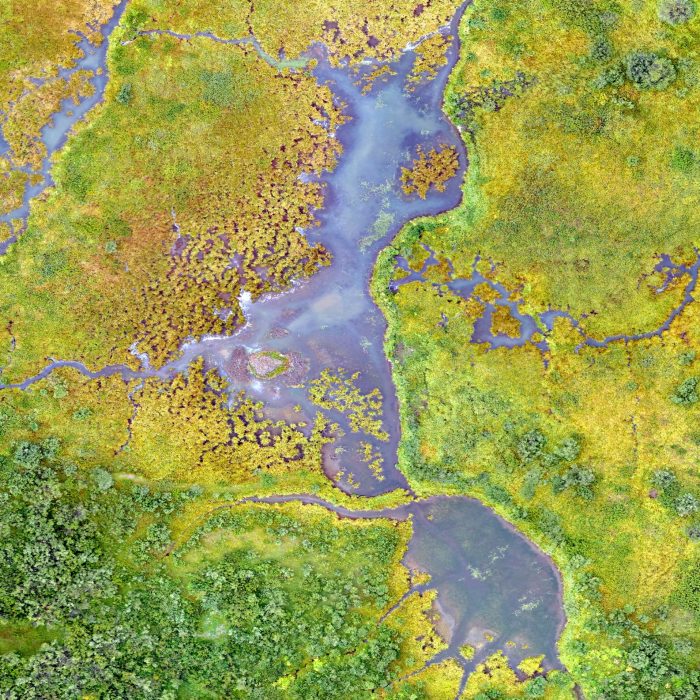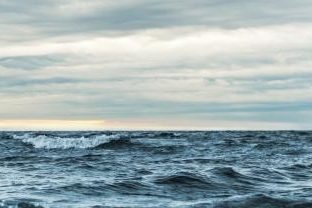- UNSW
- ...
- Centre for Ecosystem Science
- Our research
- Rivers and wetlands
- Home
- About us
-
Our research
- Atmospheric
-
Conservation practice
- Water Information System for the Environment (WISE)
- Red list of ecosystems
- Shrub encroachment as a legacy of native mammal decline
- Foraging and habitat ecology of the yellow-tailed black-cockatoo
- Tackling prey naïveté in Australia’s threatened mammals
- Biodiversity sampling in Strzelecki Regional Reserve
- The reintroduction of locally extinct mammals: The landscape ecosystem approach
- The persistence of common wombats in road impacted environments
- Temperate highland peat swamps on sandstone
- Cumberland plain woodland restoration
- Strategic adaptive management
- Limit to climate change adaption in floodplain wetlands - Macquarie Marshes
- Managing for ecosystem change in the greater blue mountains world heritage area
- Adaptive management of Ramsar Wetlands
- Managing for biodiversity in boom and bust cycle environments
- Submission on Biodiversity Act Review
- Marine ecosystems
-
Remote sensing and GIS
- Mangrove response to climatic variability
- Using radar satellite imagery to detect and monitor flooding in arid Australian wetlands
- Supporting continental retrieval of vegetation biophysical attributes
- The Injune Landscape Collaborative Project
- Tree species shifts in response to environmental change
- Regrowth mapping
- Regional biodiversity responses to climate change
- Will climate change affect the ecology of temporary lakes in Australia?
-
Rivers and wetlands
- Changes to the Darling River and Menindee Lakes – past, present and future
- Lowbidgee wetlands of the Murray-Darling Basin - The Nimmie-Caira
- A stitch in time – synergistic impacts to platypus metapopulation extinction risk
- Tube fishway project
- National waterbird survey
- Eastern Australian waterbird survey
- Feather map of Australia
- Life history and dynamics of a platypus (Ornithorhynchus anatinus) population: four decades of mark-recapture surveys
- Adequacy of environmental assessment of the proposed Macquarie River pipeline to the city of Orange
- Increasing production from inland aquaculture in Papua New Guinea for food and income security
- Aquaculture and environmental planning group
- Understanding soil-related constraints on aquaculture production in the highlands of Papua New Guinea
- Improving technologies for inland aquaculture in Papua New Guinea (ACIAR Project FIS2014062)
- Drying of ancient Thirlmere Lakes caused by human activities
- Application of GIS and remote sensing to assess sustainable mariculture and protect conservation zones
- Improving the sustainability of rice-shrimp farming systems in the Mekong Delta, Vietnam
- A SWOT analysis of Papua New Guinea’s inland fisheries and aquaculture sectors
- Carbon and floodplain biota in the Macquarie marshes
- Micro-invertebrate community dynamics and flooding in the Macquarie marshes
- Just add water? The effectiveness of environmental flows during wetland vegetation restoration
- Application of motion sensing cameras as a tool for monitoring riparian fauna
- Captive or wild?
- Brolga and Sarus crane diet comparison
- Lake Brewster pelican banding
- Aquatic invertebrate strategies for coping with drought
- Submission on Draft Lake Eyre Basin Strategic Plan
- The Menindee Lakes Water Savings Project – an example of poor decision-making
- Flow-MER
-
Terrestrial ecosystems
- Post-fire recovery of threatened ecological communities
- Environment Recovery Project: Australian bushfires
- Community stability of upland swamp vegetation
- An innovative approach to maximising catchment water yield in a changing climate
- Post-fire seed production in Hakea Gibbosa
- Managing fire regimes with thresholds to save threatened flora and fauna
- Stopping the toad
- Trophic cascades in NSW North Coast forests
- Individual hunting behavior in feral cats
- Mallee Ecosystem Dynamics
- Investigating artificial waterhole utilisation and management in north-eastern Botswana
- Investigating the spatial ecology, habitat use, behaviour, and ecosystem engineering of hippopotamus (Hippopotamus amphibius), a keystone species in the Okavango Delta and Chobe River, northern Botswana
- Does overgrazing reduce ecosystem functions
-
Study with us
- Courses
-
Postgraduate research projects
- Platypus breeding
- Maximising establishment success in reintroduced populations
- PhD scholarship saving our species - patch value, viability and resilience
- PhD scholarship – mechanics of species irruptions
- Conservation ecology of Greater bilby: survival, reproductive success and movement ecology in a breeding sanctuary in NSW
- Scientia PhD scholarship - Identifying healthy burning practices for Australia’s threatened plant species
- Scientia PhD scholarship - Ecosystem restoration through rewilding
- Platypus population health and dynamics
- Tackling prey naiveté in Australia’s endangered mammals
- Testate amoebae: a new biomarker of climate change and human impact in peatlands
- Surface water dynamics as a function of climate and river flow data
- Multisensor integration for environmental flows
- Response of northern Australian mangroves to climatic variability
- Comparative effects of extreme heat on threatened desert mammals
- Alumni - Where are they now?
- FAQ
- Workshops
- Our Impact
- News
- Wild Deserts
- Flow-MER
- Home
- About us
-
Our research
Conservation practice
- Water Information System for the Environment (WISE)
- Red list of ecosystems
- Shrub encroachment as a legacy of native mammal decline
- Foraging and habitat ecology of the yellow-tailed black-cockatoo
- Tackling prey naïveté in Australia’s threatened mammals
- Biodiversity sampling in Strzelecki Regional Reserve
- The reintroduction of locally extinct mammals: The landscape ecosystem approach
- The persistence of common wombats in road impacted environments
- Temperate highland peat swamps on sandstone
- Cumberland plain woodland restoration
- Strategic adaptive management
- Limit to climate change adaption in floodplain wetlands - Macquarie Marshes
- Managing for ecosystem change in the greater blue mountains world heritage area
- Adaptive management of Ramsar Wetlands
- Managing for biodiversity in boom and bust cycle environments
- Submission on Biodiversity Act Review
Remote sensing and GIS
- Mangrove response to climatic variability
- Using radar satellite imagery to detect and monitor flooding in arid Australian wetlands
- Supporting continental retrieval of vegetation biophysical attributes
- The Injune Landscape Collaborative Project
- Tree species shifts in response to environmental change
- Regrowth mapping
- Regional biodiversity responses to climate change
- Will climate change affect the ecology of temporary lakes in Australia?
Rivers and wetlands
- Changes to the Darling River and Menindee Lakes – past, present and future
- Lowbidgee wetlands of the Murray-Darling Basin - The Nimmie-Caira
- A stitch in time – synergistic impacts to platypus metapopulation extinction risk
- Tube fishway project
- National waterbird survey
- Eastern Australian waterbird survey
- Feather map of Australia
- Life history and dynamics of a platypus (Ornithorhynchus anatinus) population: four decades of mark-recapture surveys
- Adequacy of environmental assessment of the proposed Macquarie River pipeline to the city of Orange
- Increasing production from inland aquaculture in Papua New Guinea for food and income security
- Aquaculture and environmental planning group
- Understanding soil-related constraints on aquaculture production in the highlands of Papua New Guinea
- Improving technologies for inland aquaculture in Papua New Guinea (ACIAR Project FIS2014062)
- Drying of ancient Thirlmere Lakes caused by human activities
- Application of GIS and remote sensing to assess sustainable mariculture and protect conservation zones
- Improving the sustainability of rice-shrimp farming systems in the Mekong Delta, Vietnam
- A SWOT analysis of Papua New Guinea’s inland fisheries and aquaculture sectors
- Carbon and floodplain biota in the Macquarie marshes
- Micro-invertebrate community dynamics and flooding in the Macquarie marshes
- Just add water? The effectiveness of environmental flows during wetland vegetation restoration
- Application of motion sensing cameras as a tool for monitoring riparian fauna
- Captive or wild?
- Brolga and Sarus crane diet comparison
- Lake Brewster pelican banding
- Aquatic invertebrate strategies for coping with drought
- Submission on Draft Lake Eyre Basin Strategic Plan
- The Menindee Lakes Water Savings Project – an example of poor decision-making
- Flow-MER
Terrestrial ecosystems
- Post-fire recovery of threatened ecological communities
- Environment Recovery Project: Australian bushfires
- Community stability of upland swamp vegetation
- An innovative approach to maximising catchment water yield in a changing climate
- Post-fire seed production in Hakea Gibbosa
- Managing fire regimes with thresholds to save threatened flora and fauna
- Stopping the toad
- Trophic cascades in NSW North Coast forests
- Individual hunting behavior in feral cats
- Mallee Ecosystem Dynamics
- Investigating artificial waterhole utilisation and management in north-eastern Botswana
- Investigating the spatial ecology, habitat use, behaviour, and ecosystem engineering of hippopotamus (Hippopotamus amphibius), a keystone species in the Okavango Delta and Chobe River, northern Botswana
- Does overgrazing reduce ecosystem functions
-
Study with us
Postgraduate research projects
- Platypus breeding
- Maximising establishment success in reintroduced populations
- PhD scholarship saving our species - patch value, viability and resilience
- PhD scholarship – mechanics of species irruptions
- Conservation ecology of Greater bilby: survival, reproductive success and movement ecology in a breeding sanctuary in NSW
- Scientia PhD scholarship - Identifying healthy burning practices for Australia’s threatened plant species
- Scientia PhD scholarship - Ecosystem restoration through rewilding
- Platypus population health and dynamics
- Tackling prey naiveté in Australia’s endangered mammals
- Testate amoebae: a new biomarker of climate change and human impact in peatlands
- Surface water dynamics as a function of climate and river flow data
- Multisensor integration for environmental flows
- Response of northern Australian mangroves to climatic variability
- Comparative effects of extreme heat on threatened desert mammals
- Our Impact
- News
- Wild Deserts
- Flow-MER
Rivers & wetlands

The Centre for Ecosystem Science has a strong background and focus on investigating the ecology of wetlands and rivers. We are particularly interested in the “boom” and “bust” ecology of inland river systems, focusing a considerable amount of our work in the Murray-Darling Basin and its more important wetlands. We have major study sites in the Macquarie Marshes on the Macquarie River, the Lowbidgee wetlands on the Murrumbidgee River and the Barmah-Millewa Forest on the River Murray. Various other projects cover most of the major wetlands in the Murray-Darling Basin (see waterbirds). An important part of this work is investigating the relationships and importance of environmental flows for large wetland systems, particularly through the lens of different animals, plants and ecosystem processes that depend on these flows. We are also investigating relationships between flow regimes and flooding to determine long term impacts of development and options for rehabilitation of wetland systems. A strong focus is the ecology of waterbirds and effects of water resource management on their populations. The Centre also runs one of the longer wildlife surveys in the world, started in 1983 and continuing every year, the aerial survey of waterbirds in eastern Australia.
Macquarie Marshes
The Macquarie Marshes are one of the largest and more significant wetland systems in Australia. They are recognised for their conservation importance as Nature Reserve and a wetland of international importance under the Ramsar Convention. At present, the Centre is focusing on the effective management of environmental flows (currently about 300,000 ML/yr). This water is purchased by the NSW and Australian Governments in an effort to return ecological health to the ecosystem. Relatively little is known about the specific responses of the organisms to these flows and so we are investigating benefits to native fish, waterbirds, invertebrates, frogs, bats, turtles and vegetation. We are also working with the NSW Office of Environment and Heritage and exploring the links between flooding detected using satellite imagery and responses of different organisms. We are also investigating opportunities for managing environmental flows in the major dam, upstream of the Marshes. By quantifying these empirical relationships, we aim to assist in the evaluation of various environmental flow options at different temporal and spatial scales.
Waterbirds
Waterbirds are one of the more obvious animal groups found on wetlands, including lakes and floodplains. There are many different groups from the large waterbirds, such as Australian pelicans, black swans and brolgas, to the many small wading birds such as sharp-tailed sandpipers and red-kneed dotterel. The Centre investigates long-term dynamics of waterbird populations and communities to understand how they respond to boom and bust cycles of Australia’s rivers and wetlands and also the impacts of water resource developments.


























